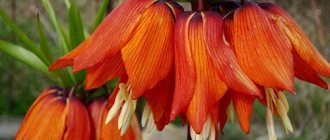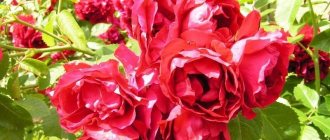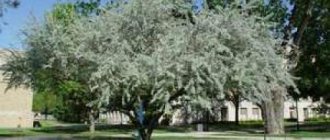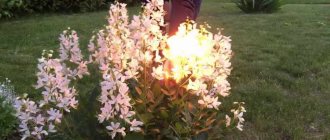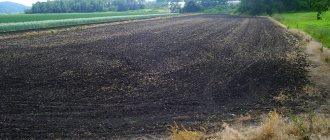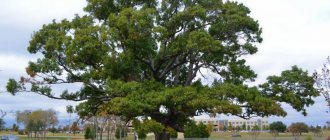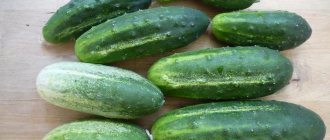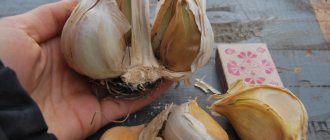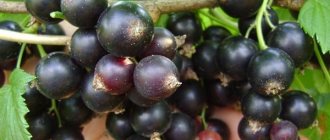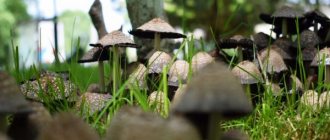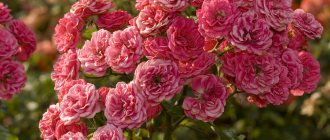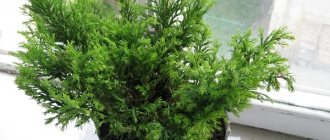Lovage - a brief description of the plant
What kind of lovage plant is this, the care and cultivation of which is simple and easy - it is a perennial plant with fast growth, a number of useful properties and a pronounced aroma. To prevent the bush from darkening other plants, you need to choose the right place for it. It is recommended to plant lovage along the edges of the site or near the fence.
Brief description of the plant:
- height about 2 m;
- root - branched, fleshy;
- leaves - can have two forms - pinnate and double pinnate; the upper leaf plates have a trifoliate shape, the color is dark green;
- inflorescences are collected from small yellow flowers, umbrella-shaped.
Additional Information! Lovage is not an ornamental plant. Given its not very attractive appearance, it is not used in landscape design.
Where is the plant used?
After planting the crop, the harvest can be harvested the following year. The leaves of the bushes are not cut off for propagation of seeds. Lovage is used:
- in cooking. The spice is added to salads and used in cooking fish, meat, pilaf and various broths;
- in cosmetology. Decoctions are prepared from the plant for rinsing hair, for cleansing the face, treating acne, getting rid of the shine of oily skin;
- at home. Grass with a persistent, specific aroma is hung near open windows and repels insects.
- in medicine. Lovage has weak analgesic, choleretic, tonic and restorative properties.
Planting crops at home allows you to use crops for various purposes all year round. Lovage, which is distinguished by simple cultivation and easy care, is a perennial that decorates the garden plot with a pleasant spicy aroma and a riot of green leaves. An unpretentious frost-resistant plant is valued for its versatility - beautiful flowering, culinary and medicinal capabilities.
Lovage is better known as a spice. Its taste at first seems sweetish, and then moderately bitter and spicy. It goes well with almost all meat dishes, but it reveals a whole palette of flavors in home canning and fish dishes, giving them a peculiar mushroom aroma.
FAMILY: Celery
CYCLE: Perennial herbaceous plant, in the first year of life it forms a basal rosette of leaves, starting from the second year it blooms and bears fruit.
CROPE ROTATION: Potatoes, cucumbers, and beets are suitable as predecessors. carrot
USES: Spicy vegetable and medicinal plant
Since lovage is a perennial, before sowing, in addition to organic matter, 10-15 g per 1 sq.m of potassium chloride and superphosphate are added to the soil, and when seedlings appear, also 10-12 g per 1 sq.m of urea. It is best to grow lovage along the edge of the garden, along the fence, as it grows tall with a powerful root system. Lovage is sensitive to light only when seedlings appear; adult plants can grow in dark places.
Lovage seeds begin to germinate at a temperature of +3...+4 degrees, the optimal temperature for growth and development is +12...+15 degrees.
Useful properties of the plant
Growing medicinal lovage does not have decorative purposes; it is used for other needs. The plant is used in cooking, perfumery, and folk medicine. All parts of the bush are useful: roots, inflorescences and leaves.
The plant has the following beneficial effects:
- relief of headaches - leaves of the bush are applied to the head;
- normalization and restoration of the digestive system - the use of decoctions, teas;
- treatment of skin diseases, including ulcers and long-healing wounds, in this case compresses are used;
- stimulation of the endocrine glands;
- increased vitality;
- treatment of kidney diseases, elimination of extensive swelling of soft tissues.
Lovage is one of the components of many natural medicines.
The beneficial properties of lovage are based on its composition, which includes the following components:
- tannins;
- Apple acid;
- resins;
- essential oils;
- gum;
- vitamin C.
Additional Information! I found the use of lovage not only in folk medicine. Due to its beneficial composition and wide spectrum of action, the plant is used by pharmaceutical companies in Holland, Germany, Switzerland and Finland.
Lovage is a common component in Tibetan medicine and is used in homeopathy.
Contraindications
Lovage has no contraindications and has no toxic effects. Anyone can use medicines based on it, without exception.
“Love-grass” - lovage
I first saw lovage at my friends’ dacha about ten years ago. No, this plant did not evoke any special emotions in me: well, beautiful foliage and nothing more, the flowers are inconspicuous, one might say unsightly - then I thought. But, as often happens, the first impression turned out to be deceiving. After I learned that lovage is an excellent seasoning and a wonderful healer, I began asking my friend about the secrets of growing it and, of course, asked for the root. Many years have passed, but lovage is still one of my favorites, so to speak. And I want to share the secrets of growing it with you.
Lovage has long been cultivated in many countries in Europe and North America. It was a favorite plant in the monasteries of the Benedictine monks, in fact, thanks to whom it spread throughout the world. Although the birthplace of lovage, as well as many other herbs and spices, is the East, namely Iran.
A newcomer from the East, belonging to the umbrella or celery family, lovage has today become a favorite of many gardeners. It is valued as an indispensable seasoning for fish and meat dishes by Germans and Ukrainians, respected by Belarusians for its healing properties, and used in folk medicine by Czechs.
Also, in Ukraine it was customary to sew lovage into a wedding dress - this guaranteed the boundless love of the spouses - and to weave wreaths from lovage. It’s not for nothing that they called it “love-grass.”
Poets also did not ignore lovage, writing about it:
“...I’ll paint the clouds with white, I’ll scatter the brushes with poles. I suddenly became afraid from smiling and trampled lovage... barefoot. ”
By the way, even in the poems of the great Russian writer A.S. Pushkin, mentions lovage or, as this plant was also called then, dawn:
“...On the day of Trinity, when the people, Yawning, listen to the prayer service, Touchingly at the dawn They shed three tears.”
Lovage is cultivated as a perennial. It has a very massive, spindle-shaped root, shiny wedge-shaped leaves and simple flowers that remind me of dill umbrellas that bloom from July to August.
Features of growing lovage in open ground
For lovage, sowing and growing is not at all difficult. The main thing is to create comfortable conditions for the plant. Before you plant lovage, you need to remember that it emits a rather strong, pungent aroma. Therefore, it is better not to place it near the house or gazebo.
Lighting
Before growing lovage, it needs to choose the right place on the site. The bush does not tolerate direct sunlight. The best option is partial shade before lunch, and diffused sunlight in the late afternoon. Gentle, non-scorching sun is especially necessary for the plant during the formation of fruits and seeds.
Attention! Full shade all day long is not suitable for lovage, as it will simply stop developing.
The plant blooms from the beginning of June, the fruits ripen in late July, early August
Temperature and humidity
Do not allow water to accumulate near the bush, as this can cause the roots to rot. The soil should always be kept moist, but the plant should not be overwatered. In hot weather, watering is carried out 2 times a week.
Temperature is moderate, in the range of 20-22 °C. At lower temperatures, the bush slows down its growth. In hot weather, if there is no shade, the leaves begin to burn and turn yellow. Despite the fact that lovage prefers moderate temperatures, it is a frost-resistant plant.
Sowing lovage seeds
Even a beginner in floriculture can grow lovage from seeds. The easiest way is to sow the seeds in mid-autumn in open ground, and wait for seedlings in the spring. For their favorable growth and development, it is worth thinking about choosing a sowing site with the correct soil composition and moisture level. The area should not be dry, but also without stagnant water.
Soil moisture should be moderate, since excess moisture will lead to disease and gradual death of the root system. An open sunny place with a lack of humidity will contribute to yellowing and death of the above-ground part of the lovage. The best option is a shaded place with clay, peat or sandy soil.
Before spring sowing, the seeds must first be soaked in warm water and left there for 48 hours, constantly changing the cooled water to warmer water (with a temperature of about 25 degrees). After keeping the seed material for two days in a humid environment, you can proceed to drying. Dry seeds are buried in the soil to a depth of about 1.5 cm.
To obtain greenery early, it is recommended to grow lovage from seedlings. For seedlings, after soaking, the seeds are planted in individual pots or peat tablets in the first week of April. The optimal growing time is 50-60 days. Strong and strong young plants are transferred to the beds at intervals of about 30 cm, leaving free space for bushes to grow.
Planting methods - seeds, dividing the bush
Cultivation is carried out using two methods - sowing seeds and dividing the bush. Seeds should be placed in the soil no earlier than April, when the soil is already sufficiently warmed up. Algorithm of actions:
- Soak the seeds in water for 2-3 days. It is recommended to change the liquid 2 times a day.
- Furrows are prepared in the ground for seeds about 2 cm deep, no more.
- Seeds are planted at a distance of 10 cm from each other.
- After 2 weeks, thin out the seedlings.
Additional Information! Growing darling lovage from seeds is possible not only in April, but also at the end of autumn, the latest time is mid-November. Immediately after winter, when the frosts go away, shoots will appear.
Plant seeds can be purchased at the store or collected independently from the mother bush.
Lovage can reproduce by dividing the bush, but the plant must be at least 3 years old:
- carefully dig up the bush without damaging the root system;
- divide the plant into several parts, each should have 3-4 buds;
- replant the workpieces in nutritious soil and water.
After the next 3 years, the division procedure can be carried out again.
Use in folk medicine
Traditional medicine uses in recipes not only the aerial part, but also the roots of the plant. Burdock is very popular among traditional healers. Based on it, recipes have been developed for many diseases.
For pancreatitis
For pancreatitis, patients are prescribed a three-month course, during which they take the infusion for 3 weeks, then take a break for 10 days and begin treatment again. The infusion is prepared from 1 tbsp. l. herbs poured with 250 ml of boiling water. Then it is allowed to brew for 1 hour and filtered. The medicine must be taken 100 ml 3 times a day before meals.
This recipe is effective for chronic pancreatitis and the presence of the disease in elderly people. The plant stimulates the secretion of pancreatic juice.
For gastritis
For gastritis, the plant can be used independently and in the collection of other herbs. A greater effect can be achieved by combining burdock with different ingredients. First you need to prepare a mixture of St. John's wort, agrimony, plantain, peppermint and chamomile flowers, in a ratio of 1:1:2:2:2. Then 1 tbsp. l. Pour 400 ml of boiling water over the finished mixture and let it stand for 2 hours. After which the infusion can be filtered and taken 100 ml 4 times a day.
Powdered burdock is taken for gastritis, 1 g, diluted in boiled water 3 times a day.
Recipe for the liver
Taking a decoction will help with many liver diseases. For hepatitis, cholangitis, cholecystitis, liver stones and cirrhosis. For liver cirrhosis, he recommends taking the medicinal drink 3 times a day, 1/3 cup, after meals. You can add honey to the broth for taste.
How to prepare the decoction:
- 1 tbsp. l. dry crushed plant, pour 200 ml of boiling water;
- put on fire and let boil for 5 minutes;
- filter.
For cirrhosis, an infusion is also used. To prepare it you need 1 tbsp. l. burdock, pour 250 ml of boiling water and let it brew for 2 hours. You need to take this drink 4 times a day, 50 ml before meals.
For cholelithiasis
For diseases of the biliary system, agrimony infusion is also used. To prepare the medicine, you need to pour 30 g of crushed dried raw materials into 500 ml of boiling water.
Then it is important to let the infusion brew for 2 hours and after that you can strain it. You need to drink the finished product three times a day, ½ cup.
This recipe is an excellent choleretic remedy. It is effective for diarrhea, cholecystitis, cholangitis, vomiting, abdominal pain and chronic hepatitis.
How to take for oncology
Agrimony is useful even for cancer. This is exactly the case when a decoction is prepared based on the roots. To prepare, you need to take 1 tbsp. l. crushed plant roots and pour 250 ml. Then place the container with the contents on the stove and simmer over low heat for half an hour. After the time has passed, the broth is infused for 10 minutes and filtered. If cancer has affected the internal organs, then you need to take a decoction of 1/3 cup 3 times a day 30 minutes before meals.
Powdered roots are also taken for cancer patients, 1 g half an hour before meals, always washed down with warm water.
Agrimony for intestinal polyposis
Burdock is considered the most effective plant for polyps in the intestines. To eliminate the disease, you need to take a decoction of 70 ml 3 times a day before meals. To prepare a medicinal drink, 2 tbsp. l. dry raw materials are poured with 400 ml of boiling water. Then the container is placed on the fire and boiled for about 10 minutes. After time, remove the broth, allow it to cool and add boiled water to the original volume of 400 ml.
The same decoction can be used for microenemas of 50 ml.
To dilate blood vessels
Of the many folk methods, burdock is often chosen for constricted blood vessels. The powder of the plant is used for treatment. Take 0.5 g 3 times a day. The medicinal herb can also be brewed.
How to prepare the infusion:
- 2 tbsp. l. pour 600 ml of boiling water over the plants;
- let it brew for 1 hour;
- filter.
The brewed infusion is taken 200 ml three times a day for a month.
For psoriasis
For psoriatic plaques, it is recommended to take agrimony infusion orally. It helps normalize metabolism and restore affected skin areas. For cooking you need 1 tbsp. l. pour 250 ml of boiling water over the plants, cover and leave for 1 hour. Then strain. Take 4 times a day, 70–80 ml.
Rules for caring for lovage
Lovage, which is not difficult to plant and care for in open ground, requires standard procedures:
- regular loosening of the soil;
- ridding the soil around the bush of weeds;
- timely watering;
- fertilizer;
- cutting sheet plates.
If you follow these simple rules, the bush will delight you with active growth.
Watering
Watering the bush should be moderate. Regular overwatering will lead to rotting of the root system. You can tell when watering is needed by looking at the condition of the soil. It is necessary to saturate the plant with moisture when the top layer of soil dries out.
Fertilizer
The best fertilizer for lovage is an ash solution. Mullein infusion or complex fertilizers are used only in the spring if the soil has become depleted. Slurry or mineral compounds are applied in the spring, in a ratio of 1 to 10 with the soil. In the fall, rotted manure is used; ½ bucket is enough for one bush.
Attention! To fertilize lovage, the use of organic fertilizers is not recommended. Excess nitrogen in the soil will cause the bush to grow faster, but this will reduce the volume of greenery. The lovage will also lose some of its taste.
Diseases and possible pests
Due to the rather specific and strong smell, pests rarely land on the bush. There are only two types of insects that can destroy a plant:
- carrot fly - its larvae eat the rhizome, causing the bush to gradually begin to turn yellow and die;
- aphids - suck the juices from the green part of the plant, which is why it cannot develop normally and its extinction occurs.
Lovage is a strong, hardy plant that can only be destroyed by improper care.
Diseases rarely occur in lovage, and only if it is not properly cared for. The bush is affected by septoria; it occurs against the background of systematic soil transfusion. Signs of the disease are the appearance of yellow spots on the leaves, with a small black dot in the center of each spot.
How to plant lovage?
By deciding to plant lovage on your property, you will acquire a perennial plant that will delight you with its spicy greenery for many years from spring to late autumn. Planting lovage can be done either by seeds or by separated rhizomes of adult plants (starting from 3 years of age). Pre-growing of seedlings from seeds should begin in early March, but you can also sow seeds directly into open ground. Leave a distance between lovage bushes of at least 0.7 - 1 meter; plant along a fence or greenhouse.
How to plant lovage seeds?
Before sowing, lovage seeds should be prepared for their fastest germination. Due to the essential oils contained in the seeds, they remain dry for a long time, and the first shoots appear only after 3-3.5 weeks. To speed up the process of growing lovage from seeds, wash them with warm water and soak for 1-2 days. Add 10 g of wood ash or a universal biological product to one liter of water. After the seeds have swelled, they can be sown; this should be done in November or early spring. Soaked seeds are sown to a depth of 1-1.5 cm; seedlings will appear in 1.5-2 weeks.
How to plant lovage root?
Lovage will have good, strong roots if the flower stalks are removed in a timely manner, before they bloom. To get planting material, dig up the root of the plant, divide it into parts, each of which should have 2-3 buds, sprinkle the cut areas with ash. Roots for further planting should be dug up and divided in early May. Planting lovage and further care is not difficult, the “cuts” quickly take root, growing the bush in one place will be optimal for 6-8 years, then it’s worth renewing the lovage plantation.
Where to plant lovage?
When choosing a place to plant lovage, you need to provide it with conditions under which its roots will not rot due to excessive stagnation of moisture, and the above-ground parts will not dry out due to its absence. Shaded areas with soil pre-fertilized before planting and fertile soil are more suitable for growing this crop, because the plant is perennial, the technique of growing and caring for it does not involve replanting. Choose a soil that is light and moist, without nearby groundwater. It is good if the area before growing lovage was planted with cabbage or zucchini.
Collection and storage of lovage
To ensure that when collecting a plant it does not lose some of its beneficial properties, it is necessary to adhere to a number of rules and recommendations:
- In lovage, which is no more than 1 year old, only the leaves are suitable for collection. They can be collected 2-3 times throughout the year.
- The optimal time to collect leaves is before yellow umbrellas begin to appear on the bush, which indicates the beginning of lovage flowering. If you collect foliage earlier, it will not have time to be saturated with healing components and the benefit from such collection will be minimal.
- Seeds are collected only in the second year, when they are fully ripened. The time for collecting seeds is from September to October.
- Root collection is possible on plants that are at least 3 years old. The root system is carefully dug out of the ground so as not to damage it. After removing the roots, they must be washed under running water, cleared of soil. The rhizome is cut into small pieces and stored in a ventilated area until they dry. You can tell that the roots have dried out by their condition; they become fragile.
- After collection, the leaves and fruits must be dried. To speed up the process, it is recommended to place the collected parts of the bush near heating sources.
All dried ingredients must be stored in glass jars with tightly closed lids. Do not allow air to enter the storage container.
Attention! It is forbidden to store different lovage ingredients in the same container.
Lovage is a popular spice, but due to the fact that it is very spicy, with a slight bitterness in the aftertaste, you need to add it to dishes carefully
Features of use
Only the next year after planting can you harvest the leaves of the lovage. The leaves of bushes that are intended for seed ripening cannot be cut off. You can harvest in small quantities for salads. If growing lovage is intended only for harvesting, then shoots with peduncles must be removed. With the onset of cold weather, garden crops need to be covered with rotted compost.
The leaves of this spice, in fresh and dried form, are used in cooking meat, fish, broths, and added to pilaf. This must be done with caution and in small quantities, as a strong aroma can overwhelm all other odors and also add bitterness to the dish.
The stems and leaves have also found use in folk cosmetology - they rinse their hair with a decoction to make it lush, healthy and fragrant. And also for cleansing the face of blackheads and blackheads; this treatment is especially effective for oily skin types.
If you break branches with leaves and hang them near open windows, then flies and mosquitoes will not fly into the house. Since ancient times, in villages, dried lovage, along with other strong-smelling plants, was kept in houses to drive away insects - cockroaches and bedbugs really do not like its aroma.
The best plant varieties
There are several varieties of such a plant as lovage - how to grow them is described below. Some species are of medium size, others grow in very tall bushes, so you need to plan the place in advance so that lush greenery does not obscure other garden and garden crops. Each species is known for its distinctive qualities. So, for example, Amur lovage exudes the strongest aroma, and Preobrazhensky is the most frost-resistant.
Hercules
This is a small bush, the height of which does not exceed 50 cm. It is known for its large, wide leaves, which are located on long, glossy cuttings. A distinctive feature of Hercules is its very strong smell.
Don Juan
Of all the lovage trees, Don Juan is notable for its greenery, which can be collected up to 5 times a year and used to make useful preparations. 1 bush can produce up to 6 kg of leaves.
Plant pests and diseases
Elecampane, which has a strong odor, is rarely attacked by insect pests. If this does happen, then you will have to get rid of the plant, because damaged leaves and stems, especially those treated with chemicals against pests, can no longer be used as a medicine or as a seasoning. But you can collect seeds from it and plant them in another area.
Of the diseases, lovage can only be affected by root rot, which can be a consequence of excessive watering or close groundwater.
Malicious factors
The main pests of the plant are snails, aphids, white spot and carrot flies, which mercilessly destroy young shoots and the root system of “adult” plants. Fungal diseases that attack leaves are very dangerous for grass. If you do not provide timely agrotechnical assistance, you can lose a perennial plant. To control pests, chemicals are used that are sprayed on the leaves. Although after treatment with the products, it is not recommended to eat the crops. You can protect lovage from snails using granules of phosphorus fertilizer or ash scattered within a radius of 20 cm around the bushes. The emerging aphids are eliminated by a mushy mixture of ash and water, in which the stems are dipped.
